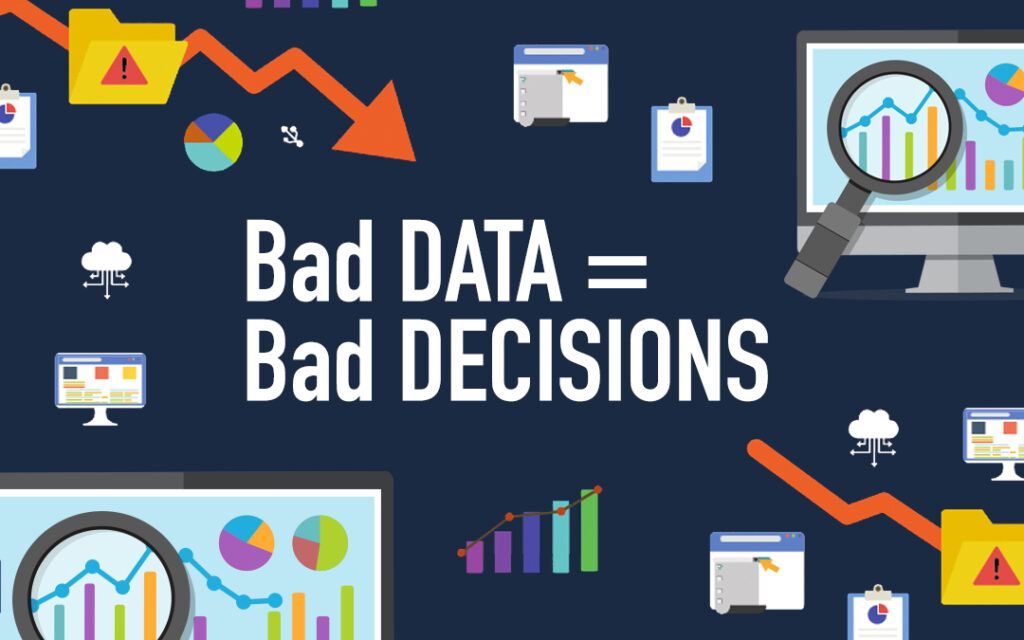
Three Things That Go Wrong with Data Reports
A consistent issue most credit unions have is the lack of consistency from one report to the next. To diagnose why this inconsistency exists we should look first at these three elements of the report:
- Timing – two reports run at two different end times or interval times will tell different stories. But it’s not that simple. If the report writer is aggregating reports from different sources, part of the data comes from the core and part from your loan origination system, you will find the timing between these two reports are often not in sync.
- Query – the logic used to create the reports can be different. When you are working with greater than, great than and equal to, equal to, less than and equal to, and less than, and all of the other query elements, there is a potential for error.
- Definitions – how the subject of the report is defined can change the report outcomes. Something as simple as, “What is your member number?” can be corrupted based upon the definition of a member. If one report uses a member definition of “a unique social security number above par in their membership share account” and another report defines a member as “a unique social security number” the results of the report are going to be different. This is also complicated by the reality that different software programs the credit union uses will have different names for the same elements. One software will refer to a member as a member, another will call a member an account, etc. There is a need to normalize the language differences between the variety of software providers.
As a credit union begins the journey to utilize more data and analytics for planning an decisionmaking, it becomes necessary to conduct a series of projects designed to collect, aggregate, normalize, and make accessible.
Collecting data is easy and hard depending on the source. It can require special code to be written to extract the code from the software. It can require the payment of API access to the data.
Aggregating requires a data warehouse or a data lake to store the data. The solution a credit union chooses is not as simple as just buying a data warehouse or data lake from your core system provider or a third party, it is an intentional decision driven by the ability to the data warehouse or lake to aggregate data from most if not all of your data sources. When a $500M+ credit union has 40 or more third party data sources, this is not an easy decision and most credit unions have found the investment into a consultant that can help evaluate the options and make recommendations with a strength an weakness analysis of each of the options. There are typically several projects involved in aggregating data from these varied sources.
Normalization of the data needs to be part of the aggregation projects. In aggregation, the credit union is moving source data from one field with a specific name into another field in a different software. The differences in the naming protocols must be understood so we can make all of the different names for a data source consistent. If the credit union just move field A into field B, the names will not be reconciled and report inconsistencies will persist.
Accessibility of data does not happen automatically. To make accessibility a reality, the credit union must have a tool or a domain that allows data to be accessed across the organization. But accessibility also requires that the data, queries, and definitions be governed. A credit union has checks and balances on their deposits and cash flow, they also need checks and balances on how data is being extracted and reported upon. If we just give “unfettered” access to data without these checks and balances, there is a significant risk in reports being generated with the sole purpose of supporting a predetermined outcome, the trustworthiness of data is lost.
Data’s primary roles in a credit union are to:
- Understand what has happened
- Understand why it happened
- Understand what can be done to change the future
- Understand how data can help to predict the future (artificial intelligence – AI)
- Understand how data can help design the future (machine learning)
For credit unions to be successful in the future, they need to see data as an organizational asset that needs to be collected, normalized, analyzed, and accessible. This aspirational goal takes time, focus, discipline, and commitment.
Cool! You should check out my article about How Artificial Intelligence is changing out lives: https://therealsciblog.wordpress.com/2018/08/14/how-artificial-intelligence-is-shaping-our-future/
Also please please please follow me, I follow back anyone who follows me!!!